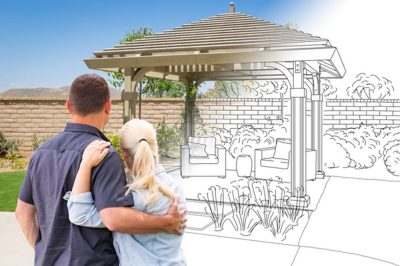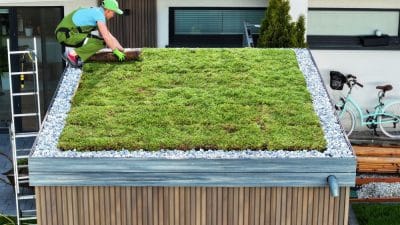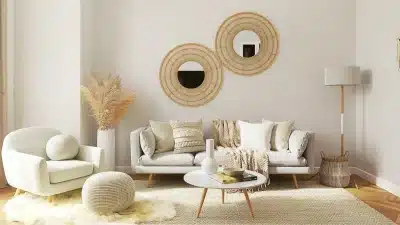
Choosing sustainable materials for outdoor furniture is both a smart and responsible decision. In today’s eco-conscious world, opting for eco-friendly solutions not only enhances the beauty of your outdoor space but also helps protect the environment. This comprehensive guide provides practical examples, useful tips, and SEO-friendly advice to help you create a stylish and sustainable outdoor oasis.
What Are Sustainable Materials?
Sustainable materials are resources that have a reduced environmental impact throughout their lifecycle. From extraction and production to use, maintenance, and recycling, every step matters. By choosing renewable, recycled, or responsibly sourced materials, you lower carbon emissions and support biodiversity protection.
Example: FSC-certified wood comes from forests managed with care for reforestation and ecological balance. This type of wood not only looks stunning but also minimizes environmental damage, making it one of the best options for Sustainable Materials for Outdoor Furniture.
Popular Sustainable Materials for Outdoor Furniture
1. Responsible Wood and Reclaimed Wood
Use FSC-certified wood or reclaimed wood to craft unique pieces of outdoor furniture.
- Usage: This wood suits both rustic and modern designs, allowing you to blend traditional charm with contemporary style.
- Benefits: Treated to withstand weather changes, this wood requires less maintenance and lasts longer.
- Concrete Example: Imagine a patio decorated with benches and tables made of FSC-certified teak. The natural, warm look remains resilient against sun and rain.
2. Recycled and Upcycled Materials
Recycled and upcycled materials are gaining popularity because they reduce waste and resource consumption.
- Recycled Plastic and Metal: Furniture made from recycled plastic or metal withstands harsh weather and features a modern design, perfect for busy outdoor areas.
- Benefits: These materials help cut down waste and save natural resources.
- Concrete Example: A set of chairs and tables made from recycled plastic can resist stains and fading, making them ideal for an energetic outdoor space.
- Upcycled Materials: Transform old wooden pallets into benches or coffee tables to create artistic, functional pieces that add originality to your décor.
3. Durable Metals and Composites
Recycled metals, such as aluminum and steel, provide an excellent mix of durability and modern aesthetics.
- Usage: These materials adapt well to various weather conditions without compromising style.
- Benefits: Recycling metals lowers energy consumption and reduces environmental impact while ensuring longevity.
- Concrete Example: An outdoor table with a recycled aluminum frame and a glass top remains beautiful and durable for years, even under extreme conditions.
4. Natural Fibers and Wicker Furniture
Natural fibers like bamboo offer an eco-friendly alternative due to their rapid growth and renewability.
- Usage: Bamboo furniture adds an exotic, natural touch to your patio, garden, or deck.
- Benefits: These materials blend seamlessly with any décor while promoting sustainability.
- Concrete Example: Bamboo chairs and pergolas can transform your outdoor area into a relaxing, inviting retreat. Additionally, wicker furniture, crafted from natural rattan or synthetic fibers designed to mimic its look, provides a timeless style that complements any sustainable outdoor design.
Key Factors in Choosing Sustainable Materials
Durability and Resistance
Ensure that your outdoor furniture can withstand rain, sun, and temperature fluctuations.
- Example: Teak wood naturally resists water and decay, making it a popular choice for long-lasting outdoor use.
Low Maintenance
Select materials that require minimal upkeep to save both time and money.
- Example: Outdoor furniture made from aluminum or recycled plastic can be easily cleaned and does not need frequent chemical treatments.
Environmental Impact
Evaluate the full lifecycle of the materials to reduce their ecological footprint.
- Example: Products with eco-certifications, such as FSC for wood, ensure that the manufacturing process meets high sustainability standards, aligning perfectly with the principles of sustainable materials.
Certifications and Quality Standards
Always check for labels and certifications that verify the source and production methods of the materials.
- Example: Eco-friendly labels on plastic or metal products indicate that they have been recycled using processes that minimize energy use and waste.
Design, Functionality, and Aesthetics
Integrate sustainable materials into your outdoor design without sacrificing modern aesthetics. Use contrasting elements to create visually appealing and functional spaces.
- Example: Combining reclaimed wood with recycled metal produces an eye-catching balance between durability and style, a hallmark of sustainable materials for outdoor furniture.
- Tip: Experiment with eco-friendly finishes, such as plant-based oils, to protect wood and maintain its natural beauty.
Innovations and Trends in Sustainable Outdoor Furniture
Modern technology opens up exciting possibilities in material processing.
- New Technologies: Composites made from natural fibers and recycled materials are designed to perform well under any weather conditions while offering unique design opportunities.
- Eco-Friendly Finishes: Finishes based on vegetable oils protect materials without harmful chemicals, keeping your outdoor space both safe and attractive.
Conclusion
Choosing sustainable materials for outdoor furniture goes beyond trends—it is a necessary step toward environmental responsibility and product longevity. Each decision you make influences the design, functionality, and ecological impact of your outdoor space.
By sourcing FSC-certified wood, recycled plastics, durable metals, or natural fibers, you build a modern, eco-friendly outdoor area that truly reflects your values. Stay informed through trusted sources, collaborate with responsible suppliers, and use the practical examples in this guide to create your perfect outdoor sanctuary.
Embrace these strategies and transform your outdoor space into an oasis where modern design meets ecological responsibility. Every choice brings you closer to a greener lifestyle and a brighter future for our planet.








